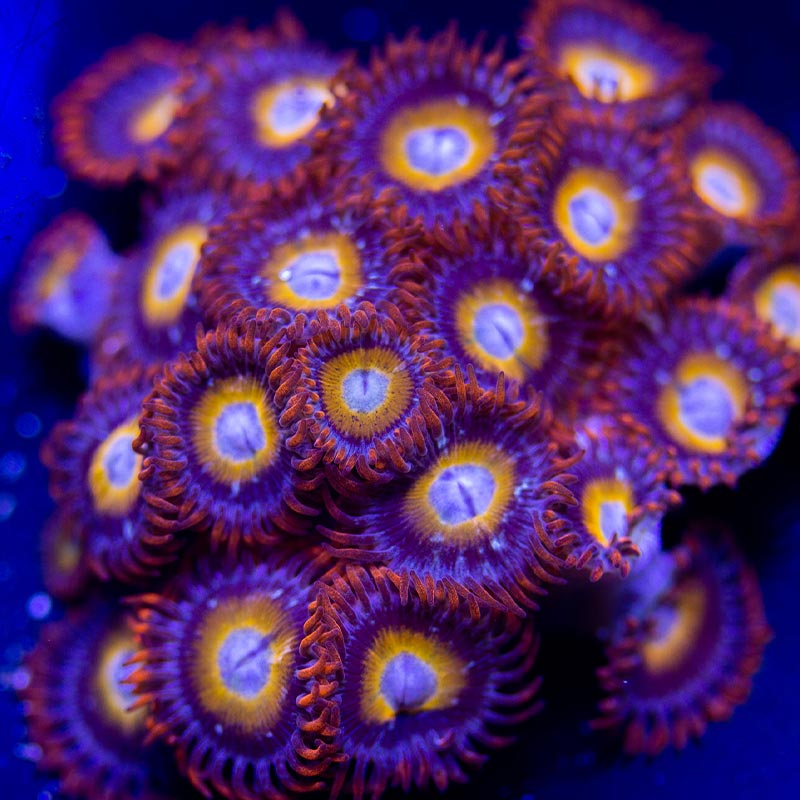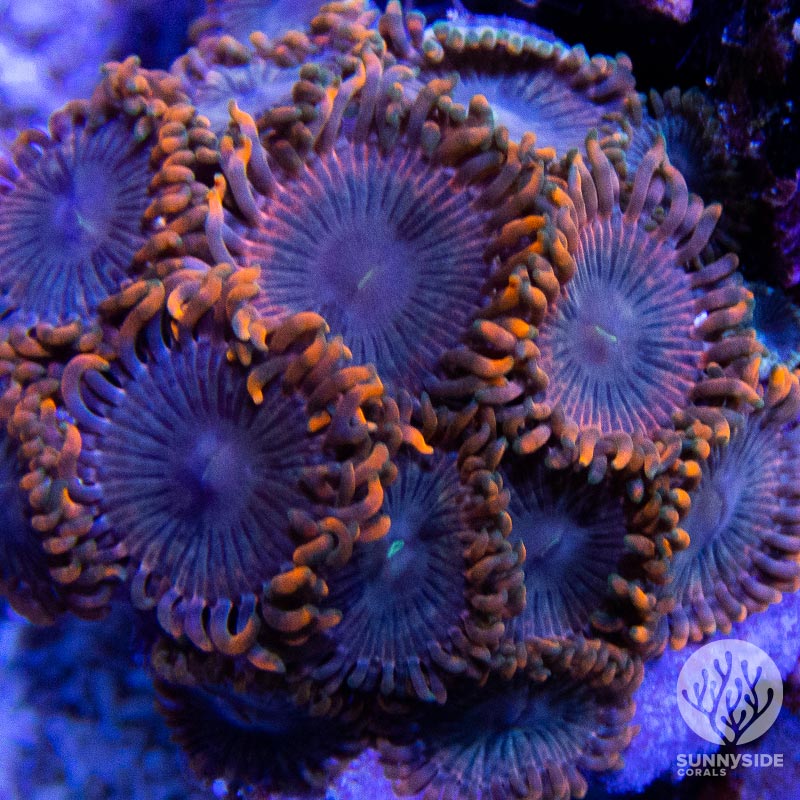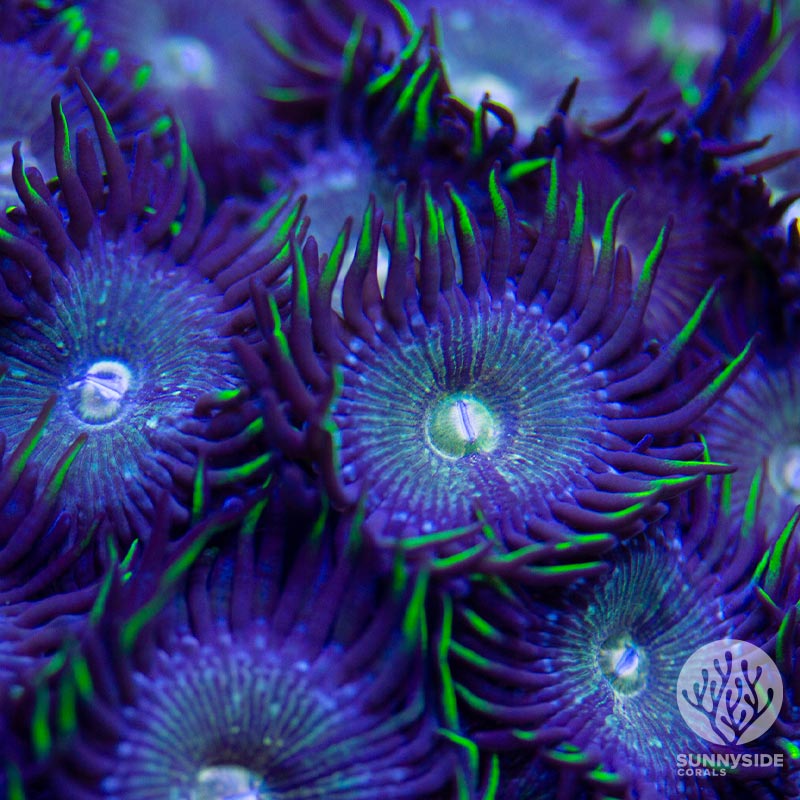Coral poisoning is one of those parts of the hoby that everyone needs to be aware of in order to stay safe. However, your chances of ever having an issues with coral poisoning are very slim as long as you are taking precautions. Unless you are directly agitating then zoanthids then touching your eyes or mouth or boiling rocks with zoanthids, you will most likely never have an issue. This blog will go over all the different circumstances you should be mindful of just so you are educated.
While coral poisoning is rare, it is important for aquarium owners to be aware of the potential dangers. It is recommended that owners wear gloves and protective gear when handling coral, and that they keep their aquariums well-ventilated to prevent the buildup of toxic fumes. By taking these precautions, aquarium owners can enjoy the beauty of coral without putting their health at risk.
-Understanding Coral Poisoning
-Causes of Coral Poisoning
-Symptoms of Coral Poisoning
-Prevention and Treatment


Understanding Coral Poisoning
Coral poisoning can be a serious concern for aquarium owners who keep certain species of coral in their tanks. The toxins produced by these corals can be harmful to both humans and other marine life. In this section, we will explore the causes, symptoms, and prevention of coral poisoning.
Causes
Coral poisoning is caused by the release of toxins from certain species of coral. These toxins can be released when the coral is disturbed or stressed, such as during handling or cleaning. The most common toxins associated with coral poisoning are palytoxin and ciguatoxin.
Palytoxin is found in certain species of Zoanthid coral, including Palythoa and Zoanthus. Ciguatoxin is found in certain species of fish, including barracuda, grouper, and snapper, that feed on toxic algae. When these fish are consumed, the toxins are transferred to the human body.
It is important to NEVER boil rock as this is the most dangerous way of getting palytoxin poisoning. This is not a safe method of removing zoas or palys. In most instances it is safe to scrape or scrub zoanthids, just be careful not to touch your eyes or mouth after directly touching them in order to make sure you are safe.
Symptoms
Symptoms of coral poisoning can vary depending on the type and amount of toxin ingested. Common symptoms include nausea, vomiting, diarrhea, muscle weakness, and difficulty breathing. In severe cases, coral poisoning can lead to paralysis, respiratory failure, and even death.
Prevention
Preventing coral poisoning involves taking certain precautions when handling or cleaning the aquarium. It is important to wear gloves and protective clothing to avoid direct contact with the coral.
Regular maintenance of the aquarium is also important to prevent the buildup of toxins. This includes regular water changes, cleaning of the tank and equipment, and proper filtration.
Overall, understanding the causes and symptoms of coral poisoning is important for aquarium owners to ensure the safety of both themselves and their marine life. By taking proper precautions and regular maintenance, the risk of coral poisoning can be minimized.
Causes of Coral Poisoning
Coral poisoning in aquariums can occur due to various reasons. Inappropriate water conditions, predator presence, disease, and infections are some of the common causes of coral poisoning.
Inappropriate Water Conditions
Maintaining appropriate water conditions is crucial for the health of coral. If the water conditions are not suitable, it can lead to the death of coral. High levels of nitrates and phosphates in the water can cause algae blooms, which can suffocate the coral and release toxins. Similarly, low levels of calcium and magnesium can lead to the death of coral. It is essential to regularly monitor and maintain the water conditions to prevent coral poisoning.
Predator Presence
Predators such as crabs, snails, and starfish can harm coral, leading to the release of toxins. Some predators feed on coral, while others can damage the coral’s protective layer, making it more susceptible to diseases and infections. It is crucial to keep an eye on the aquarium and remove any predators that can harm the coral.
Disease and Infections
Coral can get infected with various diseases, such as black band disease and white band disease. These diseases can spread quickly and lead to the death of coral. Similarly, bacterial infections can also cause coral poisoning. It is essential to quarantine new coral and regularly check for signs of diseases and infections to prevent the spread of infections.
In conclusion, coral poisoning can occur due to various reasons, and it is crucial to maintain appropriate water conditions, prevent predator presence, and regularly check for signs of diseases and infections to prevent coral poisoning in aquariums.
Symptoms of Coral Poisoning
Coral poisoning can occur when handling or maintaining an aquarium with toxic corals. Symptoms of coral poisoning can vary depending on the severity of the exposure. In this section, we will discuss the physical and behavioral changes that can occur as a result of coral poisoning.
Physical Changes
Physical changes can be one of the first signs of coral poisoning. Flu-like symptoms such as fever, chills, and headaches are common. Additionally, chest pains, coughing, and sore throat can occur. In some cases, numbness or itching in the affected area can be present.
More severe symptoms can include respiratory distress, hemorrhaging, and even death. Progressive symptoms can include muscle pain, stiffness and spasm, speech disturbance, and loss of consciousness. Blood analyses often show elevated lactate dehydrogenase (LDH), creatine phosphokinase (CPK), white blood cells, and leukocytes.
Behavioral Changes
Behavioral changes can also occur as a result of coral poisoning. These changes can include confusion, disorientation, and altered mental status. In some cases, aggression and agitation can occur.
It is important to note that symptoms of coral poisoning can be similar to other illnesses, so it is important to seek medical attention if any of these symptoms occur after handling or maintaining an aquarium with toxic corals.

Prevention and Treatment
Coral poisoning in aquariums can be a serious issue, but there are steps that can be taken to prevent it from happening in the first place. Additionally, there are effective treatments available if an aquarium owner suspects that their fish have been exposed to toxic coral.
Proper Aquarium Maintenance
One of the most important things that aquarium owners can do to prevent coral poisoning is to maintain their aquarium properly. This includes regular water changes, maintaining proper water chemistry, and keeping the aquarium clean and free of debris. Aquarium owners should also be careful when handling coral, as even small cuts or abrasions can lead to exposure to toxic substances.
Effective Quarantine Measures
Another important step in preventing coral poisoning is to quarantine new additions to the aquarium before adding them to the main tank. This allows the aquarium owner to closely monitor new fish and coral for signs of illness or toxicity before introducing them to the rest of the aquarium. Quarantine tanks should be kept clean and free of debris, and aquarium owners should be careful to avoid cross-contamination between the quarantine tank and the main tank.
Timely Medical Intervention
If an aquarium owner suspects that their fish have been exposed to toxic coral, it is important to seek medical attention for the fish as soon as possible. Symptoms of coral poisoning can include lethargy, loss of appetite, and discoloration. A veterinarian or aquatic specialist can provide treatment options, which may include medications or other interventions to help the fish recover.
By following proper aquarium maintenance procedures, implementing effective quarantine measures, and seeking timely medical intervention if necessary, aquarium owners can help prevent coral poisoning in their fish and keep their aquarium healthy and thriving.
Conclusion
In conclusion, it is important for aquarium enthusiasts to be aware of the potential dangers associated with certain types of coral. While corals are generally considered safe, some species can release toxins that can be harmful to humans and animals alike.
To prevent coral poisoning, it is recommended that aquarium owners take precautions when handling coral, including wearing gloves and protective clothing. It is also important to properly clean and maintain aquariums to prevent the buildup of harmful toxins.
If a person suspects they have been exposed to coral toxins, they should seek medical attention immediately. Symptoms of coral poisoning can include nausea, vomiting, diarrhea, and respiratory distress.
While the risks of coral poisoning should not deter people from enjoying the beauty of coral reefs and aquariums, it is important to be aware of the potential dangers and take necessary precautions to ensure the safety of both humans and animals.
FAQ’s
What are the symptoms of palytoxin poisoning?
Palytoxin poisoning can cause a range of symptoms, including nausea, vomiting, diarrhea, muscle weakness, and difficulty breathing. In severe cases, it may also lead to heart failure, coma, or even death. Symptoms may appear within minutes to hours after exposure.
How is palytoxin poisoning treated?
There is no specific antidote for palytoxin poisoning. Treatment is mainly supportive and may include oxygen therapy, intravenous fluids, and medications to manage symptoms such as nausea and vomiting. In severe cases, hospitalization may be necessary.
What is palytoxin and how does it affect coral and humans?
Palytoxin is a potent toxin produced by certain species of coral, including zoanthids. It can also be found in other marine organisms such as fish and shellfish. Palytoxin affects the nervous system and can cause a range of symptoms in humans and animals. It is considered one of the most toxic non-protein substances known.
Is zoanthid coral poisonous to humans?
Yes, zoanthid coral can be poisonous to humans. Some species of zoanthids contain high levels of palytoxin, which can cause severe poisoning if ingested or if the toxin comes into contact with the skin or mucous membranes.
Can fish be affected by coral poisoning?
Yes, fish can be affected by coral poisoning. Some species of fish may be able to tolerate small amounts of palytoxin, but high levels can be lethal. Fish that are exposed to contaminated water or food may develop symptoms such as muscle weakness, difficulty breathing, and convulsions.
Can exposure to coral in a reef tank make humans sick?
Yes, exposure to coral in a reef tank can make humans sick if the coral contains high levels of palytoxin. Aquarium workers and hobbyists who handle coral should take precautions to avoid exposure to the toxin, such as wearing gloves and eye protection and avoiding inhalation of aerosols.
